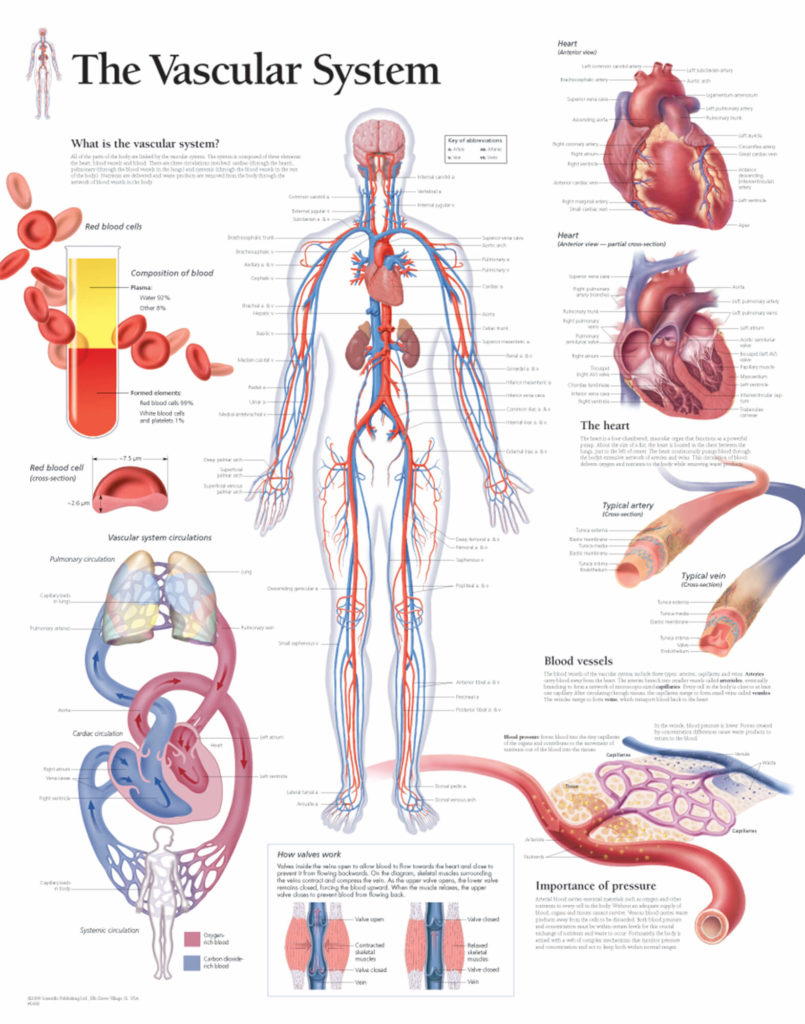
The Vascular System Scientific Publishing
a). Hypodermis b). Outer cortex c). Inner cortex d). Endodermis (3). Stele a). Pericycle b). Vascular bundles c). Medullary rays d). Pith (1). Epidermis Ø Epidermis is the outermost layer, composed of parenchymatous cells. Ø Usually, epidermis composed of single layer of cells. Ø Cells are closely packed without any intercellular spaces.

class 11th Anatomical structure of root and Vascular tissue system 02 06 2020 YouTube
Download scientific diagram | Schematic diagram for measuring the radial length/tangential diameter of an open vascular bundle in F. yunnanensis culm. M: metaxylem, P: phloem, Px: protoxylem, R.

SOLVED Draw and label the structure of open vascular bundle.
In the larger vascular bundle, it is easier to distinguish the large, open vessel elements (stained red). Within the vascular bundle, the xylem tissue is closer to the upper epidermis and the phloem tissue is closer to the lower. Each vascular bundle is surrounded by larger cells with darkly-stained contents. These make up the bundle sheath.

Some vascular bundles are described as open because these
The Vascular bundle is a strand of special vascular tissue in plants. It consists of two complex tissues, xylem and phloem. Vascular bundles are one of the major components of the vascular tissue system in plants. What are Vascular Bundles?

Vascular bundles in root and stem YouTube
Vascular Bundles (Veins) Like the stem, the leaf contains vascular bundles composed of xylem and phloem (Figure 3.4.2.6 − 7 3.4.2. 6 − 7 ). When a typical stem vascular bundle (which has xylem internal to the phloem) enters the leaf, xylem usually faces upwards, whereas phloem faces downwards. The conducting cells of the xylem (tracheids.
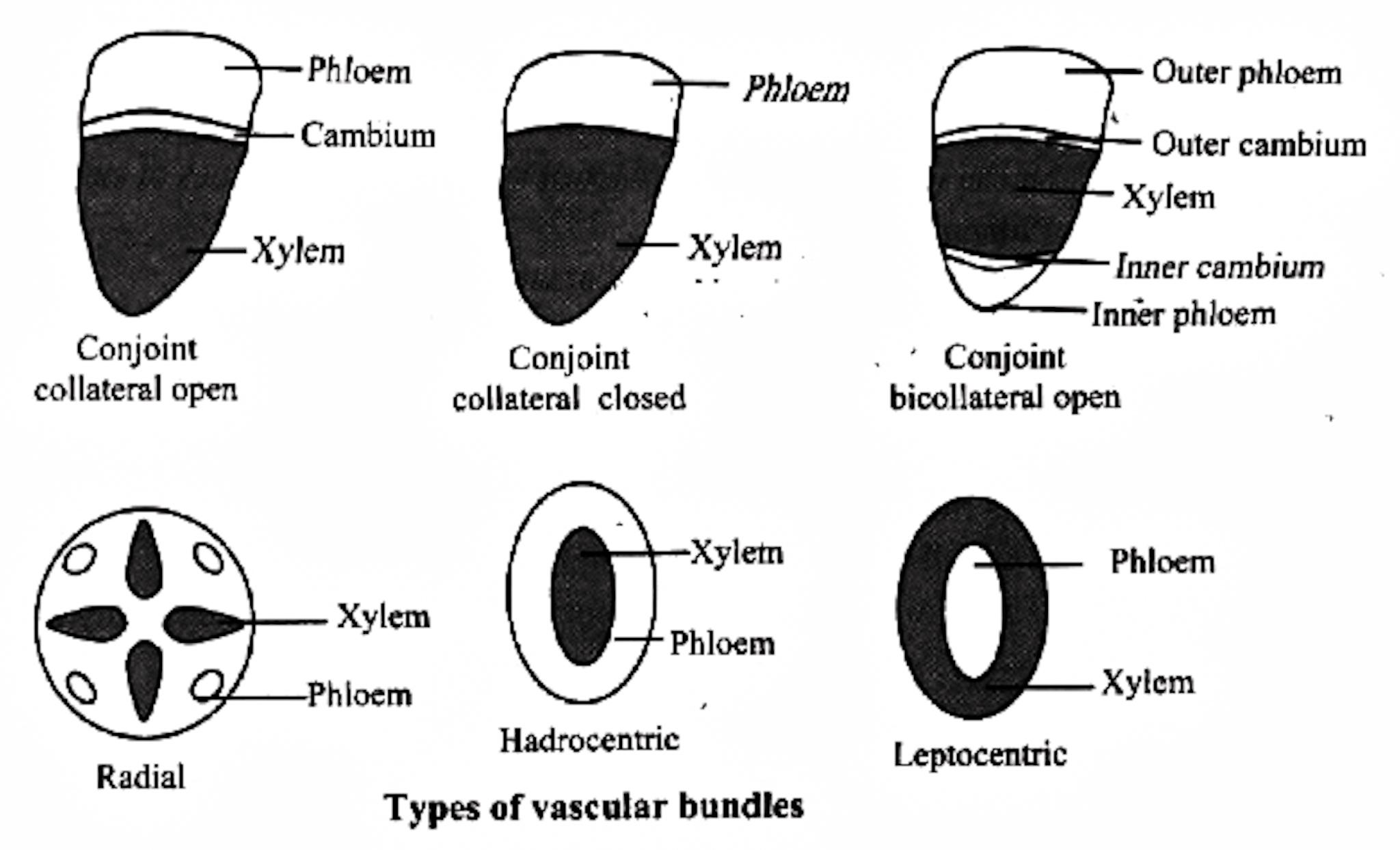
Radial vascular bundles occur inA. StemB. Monocot rootC. Dicot rootD. Both monocot and dicot roots
Type # 1. Collateral Bundle: A vascular bundle in which a strand c f phloem is present external to the strand of xylem on the same radius side by side is known as collateral bundle. ADVERTISEMENTS: Cambium may be present or absent in between xylem and phloem, and so there are the following two types of collateral bundle:

Anatomy of the vascular bundles. LM images of cross sections taken... Download Scientific Diagram
A group of xylem and phloem forms a vascular bundle. The different types of vascular bundles met within plants are: 1. Radial bundles (Simple): Xylem and phloem are seen as patches and they alternate each other, and occupy the different radii on the axis separated by non conductive tissue. example: Dicot and monocot roots. 2.
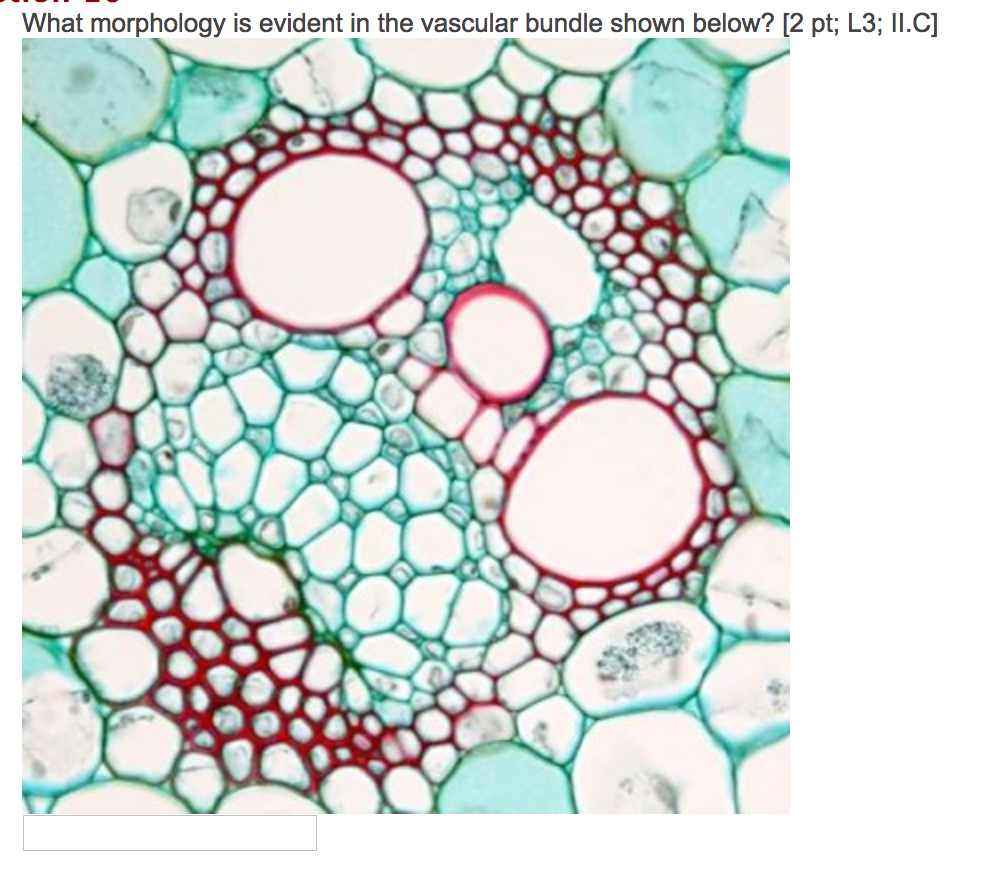
Solved What morphology is evident the vascular bundle shown
Bamboos have a hierarchical gradient structure, that is, a macroscopic gradient structure in culm diameter and a microscopic one in the bundle sheath distribution [1-4].A bamboo culm is made up of two kinds of cells, matrix tissue cells (parenchymatous) and sclerenchyma cells (vascular bundle) [5, 6].Vascular bundles made up of sclerenchyma cells act as reinforcement in bamboo.
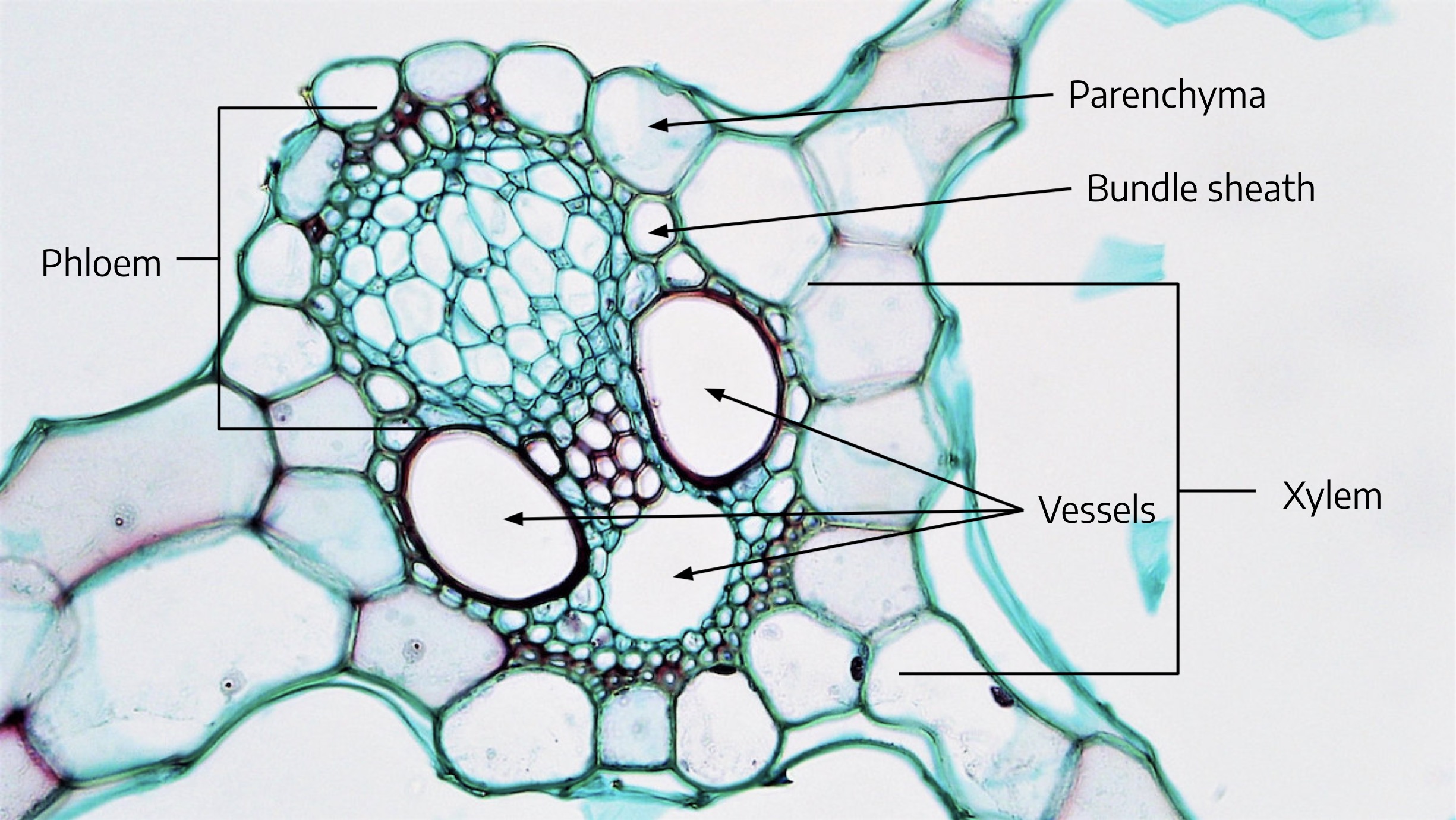
Monocot Stem Labeled
In monocot stems, the vascular bundles are randomly scattered throughout the ground tissue (Figure 30.9). Figure 30.9 In (a) dicot stems, vascular bundles are arranged around the periphery of the ground tissue. The xylem tissue is located toward the interior of the vascular bundle, and phloem is located toward the exterior. Sclerenchyma fibers.

Tissue System in Plants Types of tissue system Embibe
Solution Verified by Toppr An open vascular bundle is characterized by the presence of cambial ring between the xylem and phloem bundles. These are seen in dicot stem which undergoes secondary. The diagram represents the open vascular bundle. Solve any question of Anatomy Of Flowering Plants with:- Patterns of problems > Was this answer helpful? 0
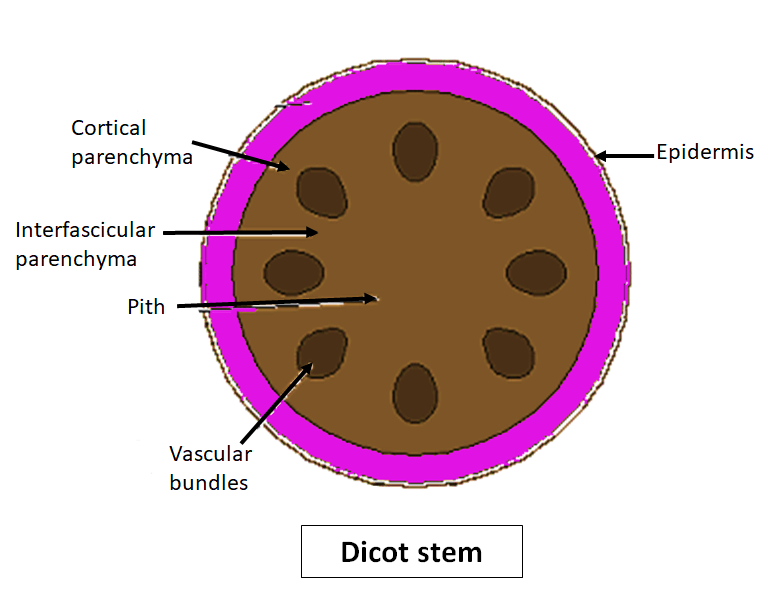
What Is Vascular Bundle Hindi Best Design Idea
A layer of cells called cambium is sometimes present between xylem and phloem, referred to as an open vascular bundle, e.g, dicot stem. In closed vascular bundles, there are no cambial cells present between the xylem and phloem, e.g, monocot stem. Bicollateral Bundles

Identify the vascular bundles given in the following figures . Sarthaks eConnect Largest
There are open vascular bundles when a vascular cambium layer (in dicots) is present. Those devoid of it (in monocots) are closed vascular bundles. Thus, vascular bundles typically represent the organization of xylem and phloem and their association with other accessory transporting tissues.

Define open vascular bundle
Open vascular bundles are the characteristic of dicotyledons (dicots). The cambium present between xylem and phloem is called FASCICULAR CAMBIUM. In closed vascular bundles, the cambium will be absent (fascicular cambium absent) and they do not show secondary growth (closed for secondary growth).
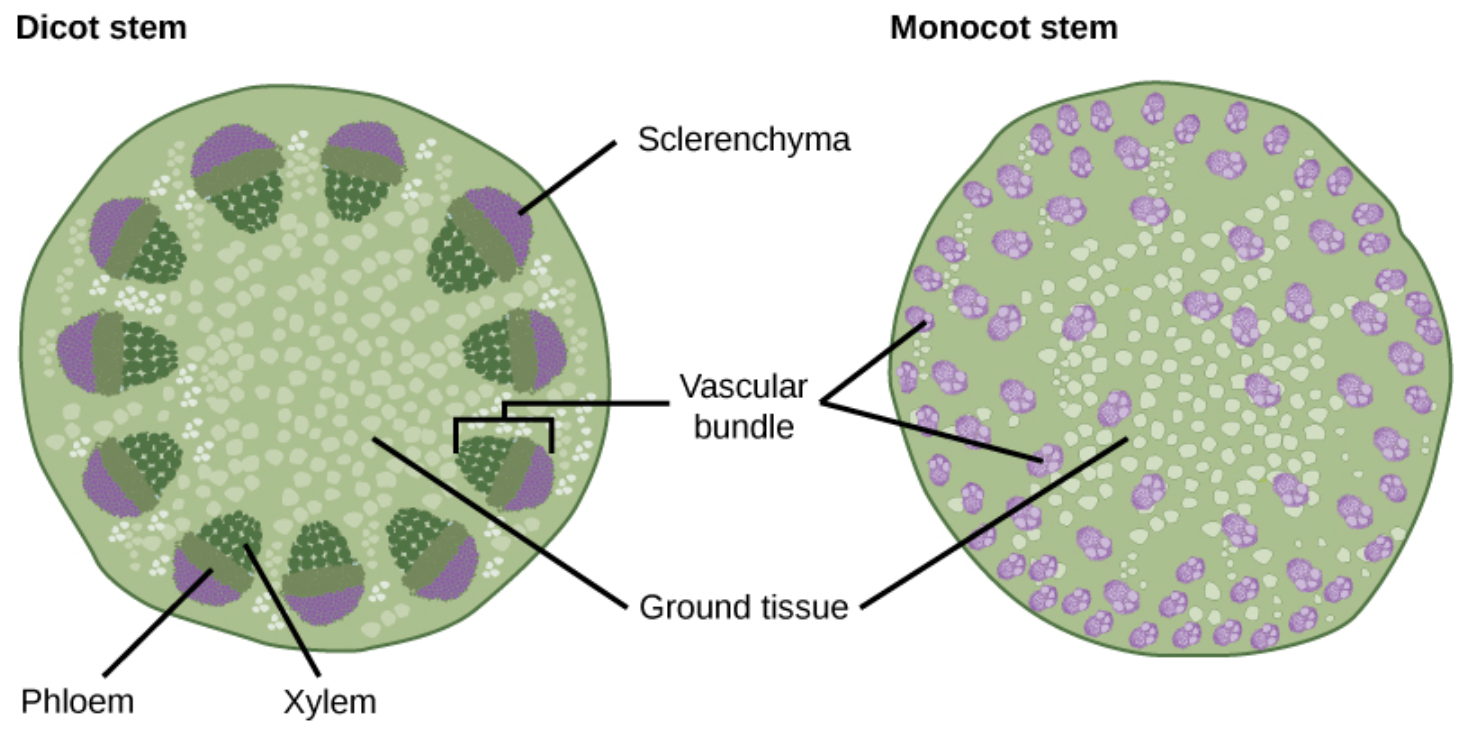
Vascular Bundles The Daily Garden
Image by RolfDieterMueller ( CC-BY) Figure 3.3.2.3 3.3.2. 3: In eusteles (left), vascular bundles are arranged around the periphery of the ground tissue. The xylem tissue is located toward the interior of the vascular bundle, and phloem is located toward the exterior. Primary phloem fibers cap the vascular bundles.

What Is Vascular Bundle And Its Types Best Design Idea
Since there is no ring of vascular bundles, there is no "inside" pith and "outside" cortex. All the ground tissue is considered to be cortex. Monocot corn stem cross section showing vascular bundles. Melissa Ha. CC BY-NC 2.0. In monocot vascular bundles the phloem is always oriented toward the outside of the plant and the xylem toward.

Stem Growth Biology for Majors II
A vascular bundle is a part of the transport system in vascular plants. The transport itself happens in the stem, which exists in two forms: xylem and phloem. Both these tissues are present in a vascular bundle, which in addition will include supporting and protective tissues.